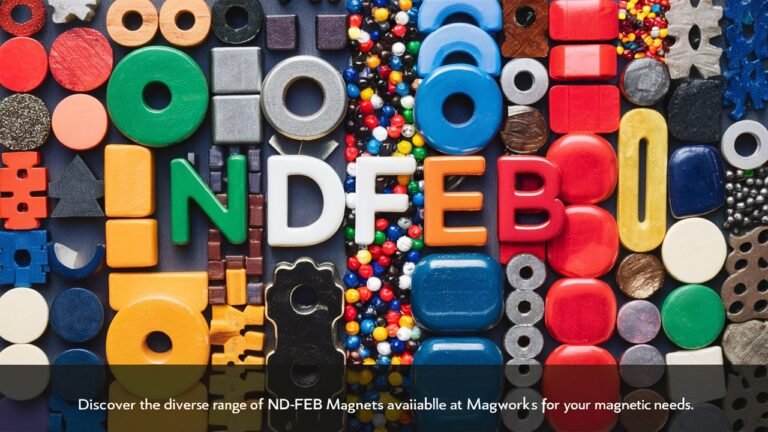Magnetic Couplings in Medical Device Applications
Innovative Solutions for Modern Healthcare
Introduction
Magnetic couplings have emerged as a transformative technology in the realm of medical device applications. By leveraging the principles of magnetism, these couplings enable the transfer of torque and motion between components without direct physical contact. This unique characteristic makes them particularly suitable for medical environments where contamination, wear, and maintenance concerns are paramount.
The Principles of Magnetic Couplings
Magnetic couplings operate on the fundamental laws of magnetism. They typically consist of two sets of magnets—one attached to a driving component and the other to a driven component. When the driving component rotates, it creates a magnetic field that induces a corresponding rotation in the driven component. This interaction allows for the seamless transmission of motion and force through a barrier, ensuring sterility and minimizing wear and tear.
Types of Magnetic Couplings
There are several types of magnetic couplings utilized in medical device applications, each offering distinct advantages:
- Permanent Magnetic Couplings: These couplings use permanent magnets to create a constant magnetic field. They are reliable and require minimal maintenance.
- Electromagnetic Couplings: Employing electromagnets, these couplings allow for adjustable magnetic strengths, providing heightened control and precision.
- Hybrid Magnetic Couplings: Combining permanent and electromagnets, hybrid couplings offer both reliability and flexibility.
Applications in Medical Devices
Magnetic couplings are increasingly integrated into various medical devices to enhance performance, sterility, and longevity. Some notable applications include:
1. Magnetic Resonance Imaging (MRI)
Magnetic couplings play a crucial role in MRI machines, facilitating the movement of components within the sterile environment of the machine’s bore. Their non-contact nature ensures that there is no risk of particulate contamination, which is vital for maintaining image clarity and patient safety.
2. Drug Delivery Systems
In advanced drug delivery systems, magnetic couplings ensure precise control over the release mechanisms of medication. This precision is particularly important in treatments requiring controlled dosages over extended periods, such as insulin pumps or chemotherapy devices.
3. Surgical Instruments
Surgical instruments equipped with magnetic couplings offer enhanced maneuverability and precision. The lack of physical connection not only reduces wear but also allows for sterilization of components without compromising the device’s functionality.
4. Robotics in Surgery
Robotic surgical systems utilize magnetic couplings to drive the intricate movements of robotic arms. The non-contact nature of these couplings minimizes the risk of contamination and ensures the smooth operation of surgical procedures.
Benefits of Magnetic Couplings
The integration of magnetic couplings into medical devices offers numerous benefits, which include:
- Sterility: Magnetic couplings enable the transmission of motion through barriers, ensuring that sterile environments are not breached.
- Reduced Wear and Tear: The lack of physical contact between moving parts significantly reduces mechanical wear, extending the lifespan of the devices.
- Maintenance: With fewer components in direct contact, magnetic couplings simplify maintenance procedures, reducing downtime and associated costs.
- Precision and Control: Magnetic couplings provide precise control over motion, which is critical for applications requiring high accuracy.
Challenges and Considerations
Despite their advantages, magnetic couplings present certain challenges that must be addressed:
- Magnetic Interference: In environments with strong magnetic fields, interference can impact the performance of magnetic couplings.
- Cost: The development and integration of magnetic couplings into medical devices can be expensive.
- Design Complexity: Ensuring effective magnetic coupling design requires specialized knowledge and expertise.
Future Trends
As medical technology continues to advance, the use of magnetic couplings is expected to grow. Innovations in magnet materials and coupling designs will likely enhance their efficiency and expand their application scope. Additionally, the rise of personalized medicine and precision healthcare will drive demand for highly accurate and reliable medical devices, further promoting the adoption of magnetic couplings.
Conclusion
Magnetic couplings represent a cutting-edge solution in the medical device industry, offering unparalleled advantages in terms of sterility, durability, and precision. While challenges remain, ongoing research and development promise to overcome these obstacles, paving the way for broader and more effective applications of this technology. As healthcare demands evolve, magnetic couplings stand poised to play a pivotal role in shaping the future of medical devices, ensuring that patient care remains at the forefront of technological innovation.








